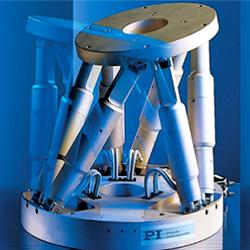Midea makes bid for robotics maker Kuka official
How Big Area Additive Manufacturing is Enabling Automotive Microfactories
Carnegie Mellon Taps Private Gift for Engineering Simulation Center
How Small Manufacturers Can Leverage Smart Manufacturing
Bosch Rexroth launches Industry 4.0 training rigs
Foxconn Replaces 60,000 Labourers With Robots in China
The Biggest Challenges of Data-Driven Manufacturing
China's Big Bid For Germany's Industry 4.0 Technology
German manufacturers take aim at smart factories, mass customization
Hannover Messe showcases Industry 4.0 innovations
These Five Exponential Trends Are Accelerating Robotics
Three ways to leverage IIoT
Examining 'Industry 4.0′ opportunities in Japan
Obama and Merkel open HANNOVER MESSE
46% of German companies use Industry 4.0 - survey
Records 616 to 630 of 665
First | Previous | Next | Last
Automation & IIoT - Featured Product

